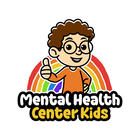|
Key Takeaways:
- Anger is a natural and normal emotion in children. However, frequent or intense outbursts may signal the need for extra support.
- Knowing what causes your child’s anger and responding with patience enables them to regulate their strong feelings.
- Behavioral therapies like Parent Management Training and Cognitive Behavioral Therapy can be effective tools for anger management.
|
All kids feel angry sometimes. That’s because anger is a normal emotion, just like feeling happy or sad. But when anger becomes overwhelming or happens a lot, it can be hard for kids — and their parents — to know what to do. That’s where anger management for kids comes in.
Anger management doesn’t mean trying to make kids stop feeling angry. Instead, it’s about teaching them how to recognize their feelings, understand what’s behind them, and find safe and positive ways to cope.
In this article, you will learn what triggers anger in kids and what parents can do to help. You’ll also find effective therapies that can support you and your child.
Is Anger in Children Normal?
Yes, anger in children is normal. In fact, research shows that anger is one of the earliest emotions to appear in children. Studies have found that babies as young as 4 months old can show anger, especially when something blocks them from getting what they want [*].
Experts explain that anger is a natural part of how kids react to frustration. It tends to peak during early childhood and slowly becomes easier to handle as kids learn better ways to manage their emotions.
But while anger is normal, there are times when it can become a concern.
For example, it’s normal for a 3-year-old to get upset when they can’t have a toy. However, if they’re often angry, have intense outbursts, or become aggressive toward others, it could mean they’re struggling to manage their feelings. It might point to an underlying problem that needs attention.
Exploring a Child’s Anger Triggers
Anger triggers can be situations, feelings, or even certain people or places that cause strong emotions. Every child is different, so their anger triggers might also vary. Knowing what triggers your child’s anger allows you to step in and help them.
Developmental and cognitive factors:
-
Frustration - something feels too hard or doesn’t go the way they hoped, kids might get frustrated and react with anger.
-
Difficulty with self-regulation - Self-regulation means managing strong feelings. Many children are still learning how to calm themselves down when they feel upset, and this can make their anger feel overwhelming.
-
Low frustration tolerance - Some kids get upset easily when things don’t go their way, even if the problem seems small to adults.
-
Trouble with problem-solving - Kids who don’t yet have the skills to solve problems may feel stuck or helpless, which can lead to anger outbursts.
Mental health conditions:
-
ADHD (Attention-Deficit/Hyperactivity Disorder) - Kids with ADHD may act impulsively and struggle with self-control. This means they’re more likely to get frustrated and angry when things don’t go their way.
-
Anxiety - Anxiety and anger are different feelings, but they are closely connected. Sometimes, a child might feel anxious first, but because they don’t know how to handle the feeling, it can turn into anger.
-
Learning Disabilities - Children with learning challenges may get angry when schoolwork or tasks feel extra hard. This can happen because they might feel embarrassed, frustrated, or like they are falling behind their classmates.
-
Autism - Kids with autism may have a harder time understanding feelings, changes, or social rules, which can cause them to feel stressed or upset.
-
OCD (Obsessive-Compulsive Disorder) - OCD can make kids feel like they have to do certain things a specific way, like washing their hands a certain number of times or keeping their toys in a perfect order. When they aren’t able to do these rituals, they can feel anxious, which can lead to anger.
-
ODD - Children with ODD often struggle with following rules or accepting authority. When they feel challenged or told “no,” their anger can build up quickly and lead to arguments or even aggressive behavior.
Environmental factors:
-
Parenting styles - Strict, harsh, or unpredictable parenting can create confusion. A child might feel scared or powerless, which may lead to anger as a reaction. Permissive parenting can lead to difficulty with emotional regulation and self-control, which can result in anger outbursts.
-
Family stress - When there is tension at home, kids feel unsafe. This constant worry can build up inside them, and since they might not know how to talk about these feelings, they might express them through anger.
-
Grief - Losing someone they love or going through a big change can make a child sad. Sometimes, this sadness can show up as anger because it’s easier to express.
-
Exposure to violence - Seeing or experiencing violence creates fear, which can turn into anger because it feels like the only way kids can protect themselves.
-
Bullying - Research shows that kids who get bullied often get angry easily and are quick to think others are being mean to them. They feel like they need to fight back when they feel hurt [*].
Tips for Parents When Dealing with an Angry Child
How you respond to a child’s anger can either “calm the storm” or make it worse. It’s important to remember that your child is still learning how to handle big emotions, and they need your help to practice better ways to cope. Here are ways to support them:
-
Stay calm - Kids look to you for how to react. If you stay calm, it helps them feel safer and less out of control. For example, if they scream because they can’t have candy before dinner, take a deep breath and calmly say, “We can talk when you’re ready to use a calm voice.”
-
Don’t give in - If you give your child what they want just to stop the tantrum, they learn that anger gets results. Instead, hold your ground kindly but firmly. It teaches them that expressing anger doesn’t mean they will always get their way.
-
Avoid anger triggers - Avoiding triggers doesn’t mean sheltering kids from all challenges, but it means giving them a little extra support so they don’t get overwhelmed easily.
-
Use time-outs and a reward system - Giving them a quiet spot to relax helps them pause and think before reacting. At the same time, a reward system encourages good behavior by acknowledging your child when they handle their anger well.
-
Praise moments of self-control - Kids who are appreciated for showing self-control feel more confident. They are more likely to keep trying, even when it’s hard.
Behavioral Therapies That Help Manage Anger
Behavioral therapies are structured treatments for children and parents to learn better ways to manage anger. They improve how they communicate with each other. Below are some of the most widely used behavioral therapies:
-
Parent Management Training (PMT) - PMT is a special program that helps parents learn how to handle their child’s difficult behaviors, such as anger and aggression. When a child acts out, a parent will know how to respond. The training usually happens over several sessions, where parents learn specific skills [*].
-
Cognitive Behavioral Therapy (CBT) - This specifically helps kids improve their ability to regulate emotions like anger, so they can handle conflicts or tricky situations with others. Some common CBT techniques for anger management in kids include noticing triggers, deep breathing, and problem-solving.
-
Parent-Child Interaction Therapy (PCIT) - Parent-Child Interaction is a well-researched therapy designed to help young children (usually ages 2 to 7) who show disruptive behaviors. Here, parents and children work together with a therapist to improve their relationship and communication.
Frequently Asked Questions
Many parents have questions about how to handle a child’s anger in the healthiest way. Below are some common questions and simple answers to help you.
How can I help my child express anger in a healthy way?
Teach them that it’s okay to feel angry, but it’s important to express it safely. These strategies may include talking to a trusted adult or friend, drawing, or using a stress ball. All of these help children manage their anger in a way that’s respectful to themselves and others.
How can I stay calm when dealing with an angry child?
Take deep breaths and remind yourself that your child’s anger is a feeling. It’s not a personal attack. If you stay calm, your child is more likely to calm down too. Try to pause before responding, so you can choose a thoughtful reaction
What activities can help kids release anger safely?
Physical activities like running, jumping, or playing outside can help burn off anger. Moving their bodies helps children feel calmer and happier. Activities such as riding a bike or simple exercises like jumping jacks serve as a positive outlet.
The Bottom Line
Feeling angry is something every child goes through. What’s really important is teaching them how to express that anger in safe and healthy ways. If you’re looking for extra help, our Anger Management Worksheets are here to guide you and your child through practicing calming techniques.
References:
- Liu, C., Moore, G. A., Beekman, C., Pérez-Edgar, K. E., Leve, L. D., Shaw, D. S., Ganiban, J. M., Natsuaki, M. N., Reiss, D., & Neiderhiser, J. M. (2018). Developmental Patterns of Anger from Infancy to Middle Childhood Predict Problem Behaviors at Age 8. Developmental Psychology, 54(11), 2090. https://doi.org/10.1037/dev0000589
- Camodeca, Marina & Goossens, Frits. (2005). Aggression, social cognitions, anger and sadness in bullies and victims. Journal of child psychology and psychiatry, and allied disciplines. 46. 186-97. 10.1111/j.1469-7610.2004.00347.x.
- Fongaro, E., Picot, M. C., Stringaris, A., Belloc, C., Verissimo, A. S., Franc, N., & Purper-Ouakil, D. (2022). Parent training for the treatment of irritability in children and adolescents: A multisite randomized controlled, 3-parallel-group, evaluator-blinded, superiority trial. BMC Psychology, 10, 273. https://doi.org/10.1186/s40359-022-00984-5





















































